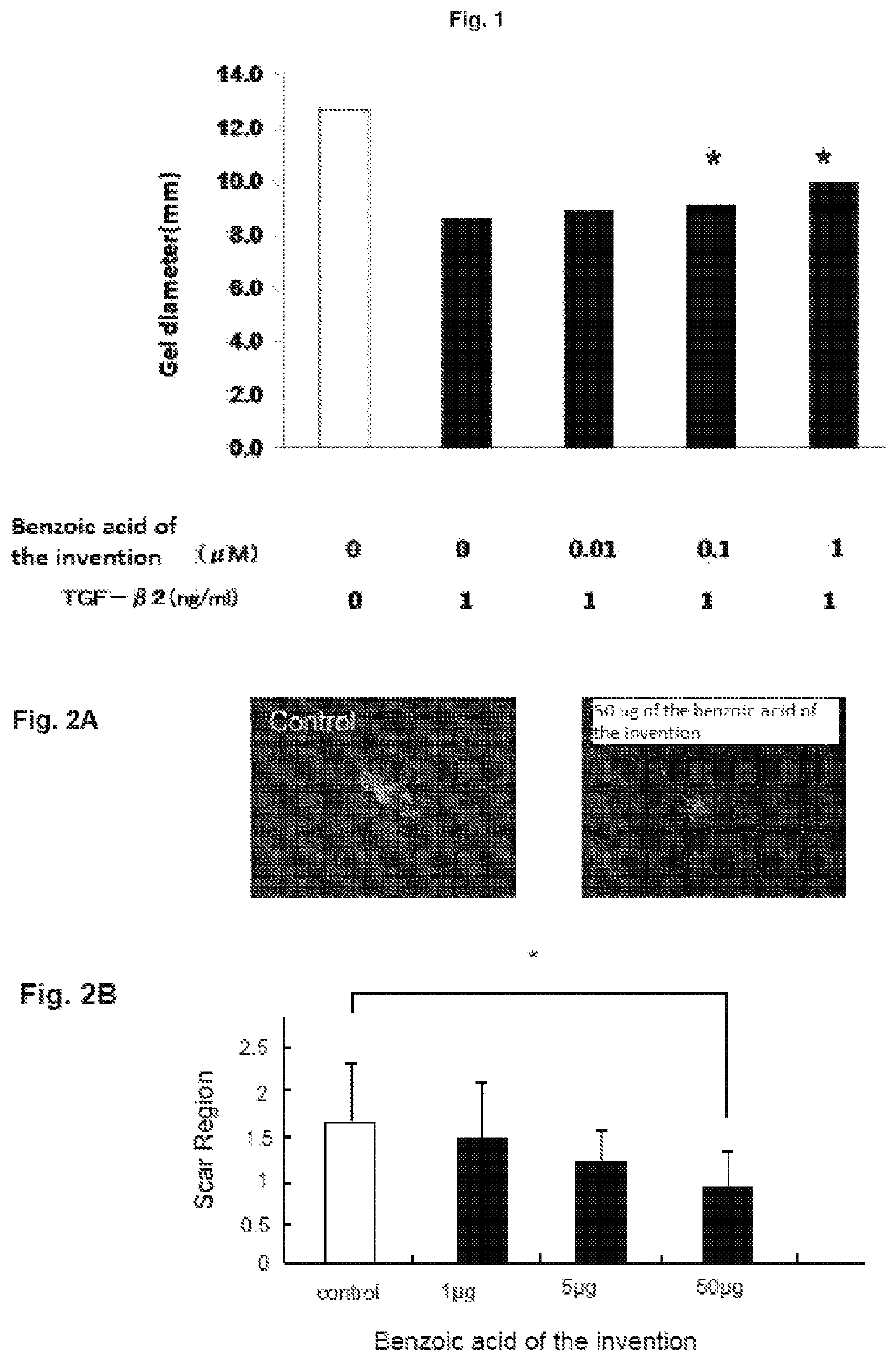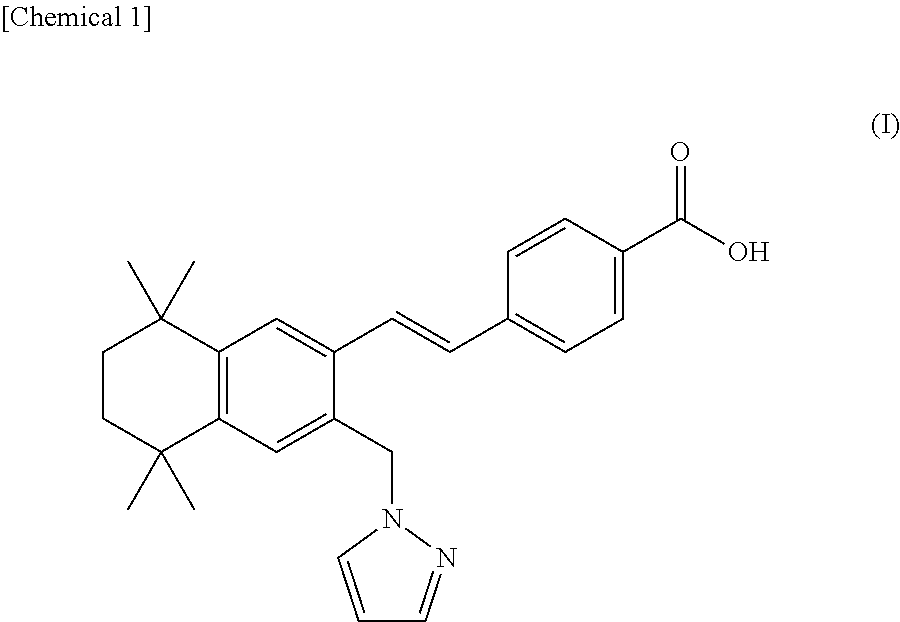Inhibitor for retinochoroidal disorders
a retinochoroidal disorder and inhibitor technology, applied in the field of inhibitors of retinochoroidal disorders, can solve the problems of unfavorable vision function, inability to improve the retinal function of each rar subtype, and poor vision function, and achieve excellent effect and inhibit retinochoroidal disorders
- Summary
- Abstract
- Description
- Claims
- Application Information
AI Technical Summary
Benefits of technology
Problems solved by technology
Method used
Image
Examples
example 1
[0040](Test on Inhibition of Three-Dimensional Collagen Gel Atrophy in Murine Retinal Pigment Epithelial Cell)
[0041]Murine retinal pigment epithelial cells were used to assess the inhibition effect of a tested compound on three-dimensional collagen gel atrophy in accordance with the method of Nishida et al (Investigative Ophthalmology & Visual Science 42: 1247-1253 (2001)). A subretinal sheet-like pigment epithelial cell comprising a retinal pigment epithelial cell from a mouse eyeball was collected and grown in primary culture. The cultured cell was detached and collected from a culture slide with 0.05% Trypsin-EDTA. After washing twice in a serum free medium (MEM: product number 11095; Gibco), a serum-free medium was added to make a cell suspension. Type I collagen (3 mg / ml: product number 637-00653; Nitta Gelatin Inc.), 10×MEM, reconstitution buffer (product number 635-00791; Nitta Gelatin Inc.), cell suspension (1.1×107 cells / ml in MEM), and water were mixed on ice at the volume...
example 2
(Test on Inhibition of Murine Subretinal Scar Formation)
[0043]A murine subretinal scar model was produced to study whether the benzoic acid of the invention has an effect of inhibiting subretinal scar formation. A subretinal scar model in a mouse was produced by the method shown below in accordance with the method of Young-joon et al (Investigative Ophthalmology & Visual Science, 52, 6089-6095(2001)).
(Production of Murine Subretinal Scar Model)
[0044]First, laser was irradiated (0.05 seconds, 200 mW, 532 nm) onto one location on the posterior pole of fundus of mouse C57BL / 6 (purchased from SLC) to destroy the Bruch's membrane, which enabled infiltration of inflammatory cells from the choroid as well as creation of air bubbles subretinally.
[0045]A 33 G needle was then inserted from pars plana. 0.5 μl of 4×107 ml thioglycollate elicited peritoneal macrophage and 1 μg, 5 μg, or 50 μg of the benzoic acid of the invention were subretinally injected. For the control, the benzoic acid of th...
example 3
Drug Formulation Example
(Drug Formulation Example 1) Instillation
In 100 ml
[0048]
Benzoic acid of the invention100 mgSodium chloride800 mgPolysorbate 80appropriate amountDisodium hydrogen phosphateappropriate amountSodium dihydrogen phosphateappropriate amountSterile purified waterappropriate amount
[0049]The benzoic acid of the invention and the other components described above are added to sterile purified water. The solution is thoroughly mixed to prepare an instillation. It is possible to prepare an instillation with a concentration of 0.05% (W / V), 0.3% (W / V), 0.5% (W / V), or 1% (W / V) by changing the amount of the benzoic acid of the invention or the like that is added.
(Drug Formulation Example 2) Ophthalmic Ointment
In 100 g
[0050]
Benzoic acid of the invention 0.3 gLiquid paraffin10.0 gWhite petrolatumappropriate amount
[0051]The benzoic acid of the invention is added to homogeneously-melted white petrolatum and liquid paraffin. The mixture is thoroughly mixed and then gradually coole...
PUM
| Property | Measurement | Unit |
|---|---|---|
| concentration | aaaaa | aaaaa |
| disorder | aaaaa | aaaaa |
| retinochoroidal disorder | aaaaa | aaaaa |
Abstract
Description
Claims
Application Information
 Login to view more
Login to view more - R&D Engineer
- R&D Manager
- IP Professional
- Industry Leading Data Capabilities
- Powerful AI technology
- Patent DNA Extraction
Browse by: Latest US Patents, China's latest patents, Technical Efficacy Thesaurus, Application Domain, Technology Topic.
© 2024 PatSnap. All rights reserved.Legal|Privacy policy|Modern Slavery Act Transparency Statement|Sitemap


